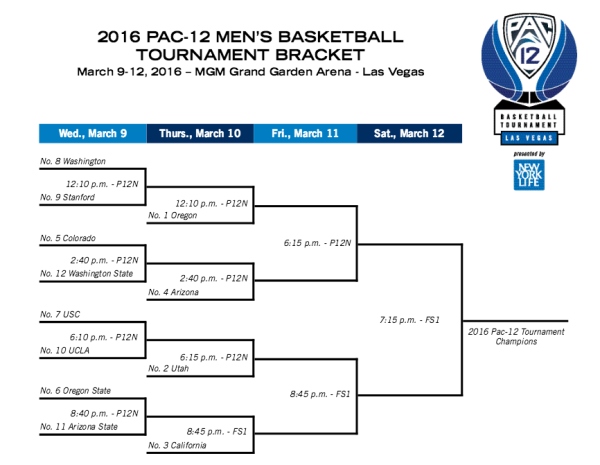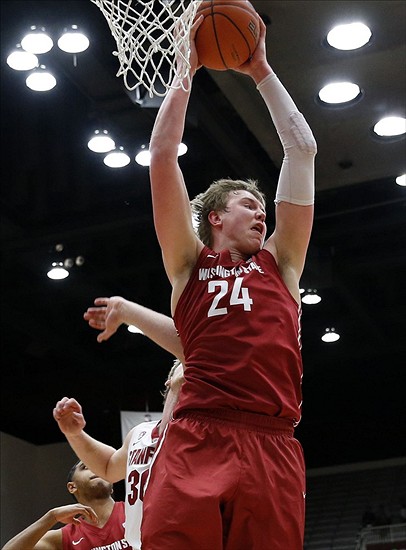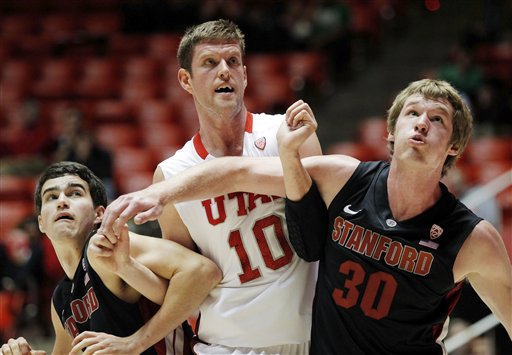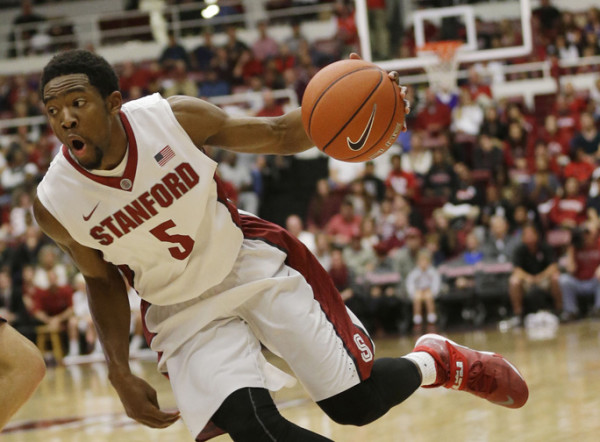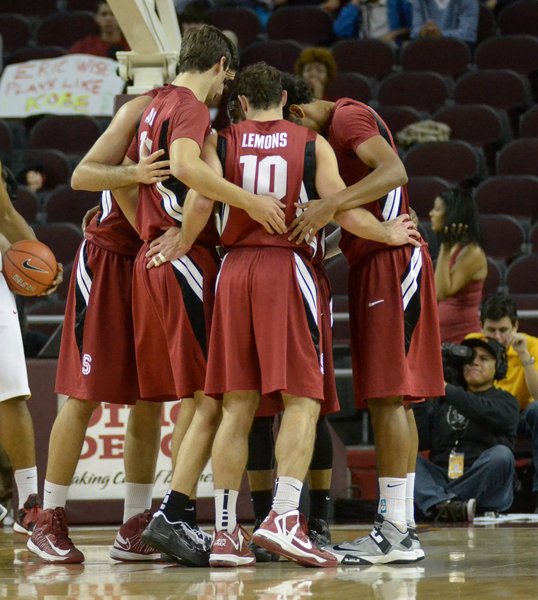Posted by Mike Lemaire on February 10th, 2016
The NBA trade deadline is now less than two weeks away, which means professional basketball writers get to throw together a bunch of hasty trade ideas and rumors in an exercise that always looks like so much fun. College basketball writers get left out of the trade deadline party because, as those who have been paying attention already know, trades are outlawed in amateur athletics. In an effort to crash that party, we are going to waste some space this week analyzing several potentially smart trades for Pac-12 contenders that will not happen. We stick to intra-conference trades to make it easy and because the thought of a bunch of petty Pac-12 coaches bickering over the fairness of those trades would be so entertaining for the rest of us. And remember, talent in addition to remaining years of eligibility are important. How else would Washington State rebuild?
Arizona gets Gary Payton II and Oregon State gets Ray Smith and Kadeem Allen
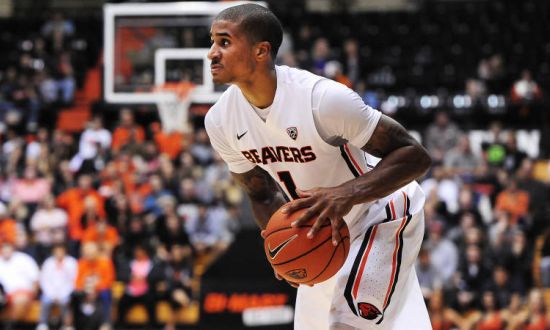
Can You Imagine Arizona If They Traded for Gary Payton II? (Oregon State Athletics)
Corvallis is a football town first and foremost but the good residents there would still likely burn the whole thing to the ground if the Beavers tried to trade away Payton II. Some analysts believe that Oregon State will be an NCAA Tournament team so Wayne Tinkle would potentially be a buyer rather than seller at the deadline. But for a limited team with young talent and a bright future, leveraging a senior like Payton II for future assets is the smart play. His arrival in Tucson doesn’t help Arizona’s immediate shooting need but he does give the Wildcats a true point guard and a more explosive scorer. Given his popularity, Oregon State would probably think long and hard about this trade but eventually would come to their senses and grab an NBA talent like Smith and two years of a poor man’s Gary Payton II (in Allen).
Washington gets Rosco Allen and Stanford gets Matisse Thybulle
Washington is still in the hunt for the Pac-12 title but head coach Lorenzo Romar is smart enough to know better than to mortgage his team’s bright future for a run this season. The Huskies’ backcourt is their strength and has too much depth to make it worth tinkering with. However, an offensive-minded stretch forward who can shoot the three and takes care of the ball would fit in nicely in the Huskies’ fluid frontcourt. Allen would probably be the least athletic forward of the bunch but he would bring polish, offensive nuance and enough athleticism to run with the young Huskies. He would offer important spacing to a team that struggles to perform in half-court sets and wouldn’t be asked to do too much defensively. Romar would probably rather part with David Crisp or Donaven Dorsey than the versatile Thybulle, but there would be enough contenders pursuing Allen so that he might be willing to pay for a rental player who could help deliver a Sweet Sixteen banner to Seattle.
Oregon gets Ike Iroegbu and Washington State gets Kendall Small and Roman Sorkin
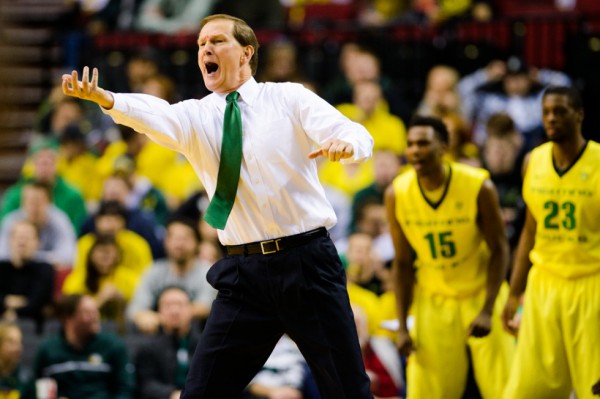
Dana Altman Needs Backcourt Depth and Ike Iroegbu Is An Easy Solution (Michael Arellano/Emerald)
Oregon is in the most precarious position of any Pac-12 contender because it is a flawed team despite its recent hot streak and its most intriguing trade chips are in the current rotation. The Ducks’ two immediate areas of need are in backcourt depth and rebounding help. If Dylan Ennis were healthy, Dana Altman would be inclined to pursue a rebounder like Josh Hawkinson. But the Ducks’ backcourt is so thin right now that getting a player like Iroegbu is more important. The junior turns the ball over too much and is not a great defender but he would give Altman’s backcourt a creative playmaker and dead-eye shooter (46.2% 3FG) at a relative discount. Oregon doesn’t have the pieces to go after Payton II or Bryce Alford, but Small and Sorkin offer enough long-term upside to convince the Cougars to part with an inconsistent talent like Iroegbu.
Cal gets Tony Parker and UCLA gets Stephen Domingo and Kameron Rooks
Despite his immense talent, Parker is probably too moody and inconsistent to garner much interest as a last-minute rental. But Cuonzo Martin, perhaps sensing that this is his only year with Jaylen Brown and Ivan Rabb, could be persuaded to take a low-risk flyer on a big-time addition. Cal would love to take some interior attention away from the precocious Rabb and Parker would undoubtedly do that. Rabb is a good enough shooter that he and Parker could play together without floor-spacing issues and Parker is a good enough post defender and rebounder that Rabb could use his length to bother shooters on and off the ball. The question would be whether Martin could get the most out of Parker and make him a more consistent player. If so, Cal might become a scary postseason proposition. For UCLA, Steve Alford would get a chance to start fresh with a young core while adding depth to his frontcourt.
Utah gets Bryce Alford and Colorado gets Kyle Kuzma and Isaiah Wright
Utah is firmly entrenched in “win now” mode whether it likes it or not. Jakob Poeltl will likely not be back for his junior season and the Utes will also lose three other rotation members including Jordan Loveridge — their third-leading scorer and best outside shooter. UCLA, on the other hand, has a solid young nucleus and a top-ranked recruiting class coming to Westwood. If Alford was ruthless enough to ship his own son out of town, now would be a good time. For Utah, the Brandon Taylor experiment has run its course. Alford isn’t known for his defense but he is still a major upgrade on both ends of the floor and he would give his new team another deep threat to pair with Loveridge. Brekkot Chapman has not improved the way Utah would have liked but he is good enough to capably replace Kuzma and Chris Reyes is a reliable backup. Kuzma is the perfect second or third big man for the new-look Bruins. He is athletic and skilled enough that he could become a double-double machine once he is away from Poeltl’s long shadow.
| microsites, pac 12
| Tagged: arizona, brandon taylor, dana altman, gary payton ii, jakob poeltl, lorenzo romar, oregon, Rosco Allen, sean miller, stanford, utah, washington
Share this story





























